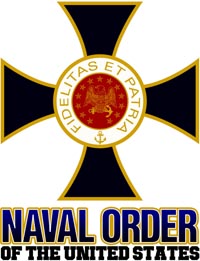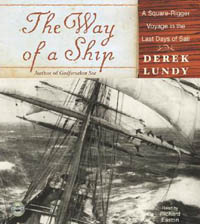News & Tall Tales. 1800s.

Ship Building in New York
August 18, 1850, Daily Alta California, San Francisco, California, U.S.A.
Ship Building in New York.
We take the annexed interesting and valuable statistics of the amount of work in course of completion in and about New York, from the Herald. It is complete, and such as will give a fair representation of the progress and the state of commerce on the Atlantic. It will be observed that the port of San Francisco is well represented on the stocks of the New York ship builders.
The well known firm of Howland &, already so deeply engaged in the California trade, have concluded to add two more steamships to their present fleet. They are to run in connection with the Tennessee, Panama, Oregon, &c., and will rank with the Empire City of J. Howard & Son's Line. One of them is to be 270 feet long, 38 beam, and 22 hold; the other of somewhat smaller dimensions. We understand that Mr. Wm. Webb and Messrs. Smith & Dimon are the contractors, who contemplate having them ready in about nine months. There have also been several splendid packet ships built, and in course of building, each addition producing something new and novel in their construction, their tonnage, varying from 1000 to 1300; indeed, the building this year has been almost entirely contained to large vessels.
W.H. Webb's Yard.
Launched
February 2. Packet ship Isaac Webb, 1,400 tons. Built for the Black Ball Line.
February 28. Ship Vanguard, 1,200 tons. In the Liverpool Line.
April 11. Steamship Florida, Lyons, built for the New York and Savannah Steam Navigation Co. She is 1,300 tons.
June 10. Steamship Alabama, Ludlow, built for the same line - same size and power.
June 10. Ship Celestial, 860 tons, for the Canton trade. (On her way to California.)
On the Stocks
Steamship Union, to take the place of the Northerner. Her tonnage will be 1,500 tons; 212 feet long, 34 beam, 22 deep.
A packet ship, to be commanded by Captain Hoxie, late of the Grimshaw. Measures 1,600 tons.W.H. Brown's Yard
Launched
January 18. Steamer Arctic, 3,500 tons of E.K. Collin's Line. She is nearly finished, and will shortly take her place in the line.
Same day. Steamer Boston, 700 tons. She runs from Boston to Bangor.
Same day. Steamer New World, Wakeman. 700 tons. (Now in San Francisco.)
May 25. Steamer New York, Jones, of the same tonnage and measurement as the New World, and on her way to California.
On the Stocks:
A steamer, building for Messrs. Lowry & Jarvis, and intended for the California trade. She is 1,100 tons, measures 225 feet long, 20 beams, and 190 hold. It is expected she will be ready next month.Westervelt & Mackay's Yard
Launched
March 26. Ship Ocean Queen, London packet, 1200 tons.
April 13. Ship Francis P. Sage, Liverpool packet. 1200 tons.
On the Stocks
A ship of 1200 tons, as a Havre packet.
A ship, Havre packet, 1150 tons.
Steamship Havre, 2,700 tons, 283 feet long, 40 wide, and 27 deep. Her engines are of the same power as the Atlantic. She is to run to Havre in connection with the steamship Franklin, and will be launched about the latter end of August.
A steamship for Davis, Brooks & Co., for the Pacific, and to be under command of Capt. Skiddy. She is about 1300 tons, 200 feet long, 30 wide, and 22 deep. She will be launched about September.Lawrence & Sneden's Yard
On the Stocks
A steamship constructing for the Norwich and New London Steamboat Company. She is 260 feet long, 34 broad, and 21 deep, and 1600 tons burthen, and intended for the Pacific, to be employed in the California trade.Jacob Bell's Yard
Launched
February 5. Steamship Baltic, one of E.K. Collins' line of Liverpool steamers. She is in build and model the same as her consorts, measuring 3700 tons.
Same day. Ship St. Louis, New Orleans line. She is 1050 tons.On the Stocks
A ship for the Canton trade, constructing for Platt & Son of Philadelphia. Is 1200 tons, 190 feet on deck, 36 feet wide, and 21 feet hold.
A ship of 1900 tons, intended for Liverpool packets.Smith & Dimon's Yard
Launched
March 20. Ship Universe (3 decker), is now in Liverpool line. Is 1300 tons.
June 15. Ship Mandarin, owend by Messrs. Goodhue & Co., and intended for the Canton trade.W. Collyer's Yard
On the Stocks
A double-decker steamship, of about 1200 tons, 242 feet long, 32 feet wide, and 12-1/2 (might be 42-1/2) hold for C. Morgan, and intended to run from New Orleans to Galveston, probably farther, as a mail ship.
A steamship, of 1400 tons, to be commanded by Captain J. J. Wright, of New Orleans, and to run from that city to Chagres.J. Simonson's Yard
LaunchedJune 11. Steamer Director, for the Nicaragua company, and to run on the San Juan. She is 65 tons, 80 feet long, and 20 wide, and 4-1/2 feet deep.
On the Stocks
A steamship of 1500 tons, 230 feet long, 33 beam, and 20 hold, building for Captain Vanderbilt. Will be ready to launch soon. Destination not made known.
A small steamer of 100 tons, for the Nicaragua company, also to run on the San Juan. She measures 100 tons, is 110 feet long, 20 beam, and 5 hold, and of very light draught.Perrine, Patterson, and Stack's Yard
Launched
Ship Star of the West, Lowber, 1280 tons, and trades between Liverpool and this port.On the Stocks
Steamship San Francisco, of 1800 tons, 255 feet long, 40 wide, and 31 deep. She is to be commanded by Capt. Wilson, and intended to run between Panama and the city she is named after. She is expected to be ready in about four months. Her machinery is being constructed at the Morgan works.
Ship Lady Franklin, of 1429 tons. This vessel is named after the lady of the great explorer of the Northern seas, and will have carved on her stern (which is round) the arms of Sir John Franklin, which is a most chaste and appropriate design, consisting of a dolphin entwined round an anchor. She is to be commanded by Captain Yeaton, and will be launched the first part of the present month.
Ship Arctic, of 1300 tons, for Liverpool Line.
A propeller for the Panama and San Francisco trade. She will be about 1500 tons, be 210 feet long, 33 beam, and 31 hold. She is building for Nathan Dale, and will be ready in about four months.
The Way of a Ship: A Square-Rigger Voyage in the Last Days of Sail

Derek Lundy
Based partly on the experiences of his great great uncle, an Irish sailor, Derek Lundy recreates the voyage of a merchant sailing ship -- the Beara Head -- around Cape Horn in the 1880s. The Way of a Ship is a white-knuckle journey around the notorious "graveyard of ships," and a gorgeous evocation of a bygone era, depicting not only the dangerous day-to-day life aboard a square rigger, but also how the ascendancy of steam ships ultimately rendered commercial sailing vessels obsolete, as The Age of Sail gave way to The Age of Steam.
The "beautiful, widow-making, deep-sea" sailing ships could sail fast and carry substantial cargo, but were vulnerable to weather and the sea's many dangers. Life at sea was often brutal and relentless; seamen were sleep-deprived and malnourished, at times half-starved.
All About America: Gold Rush and Riches
Paul Robert Walker
Meticulously researched, with specially-commissioned illustration, detailed reconstructions and original artwork from each period, reading lists, and resources for further study, this is an immersive introduction to the history that shaped America. In 1848, carpenter James Marshall made a chance discovery: a few shiny flakes-of gold in a riverbed he was digging. Within a year 800,000 gold-seekers from all over the world were on their way to California. The Gold Rush was on.Freaks of Fortune: The Emerging World of Capitalism and Risk in America
Jonathan Levy
Until the early nineteenth century, "risk" was a specialized term: it was the commodity exchanged in a marine insurance contract. Freaks of Fortune tells the story of how the modern concept of risk emerged in the United States. Born on the high seas, risk migrated inland and became essential to the financial management of an inherently uncertain capitalist future. Focusing on the hopes and anxieties of ordinary people, Jonathan Levy shows how risk developed through the extraordinary growth of new financial institutions - insurance corporations, savings banks, mortgage-backed securities markets, commodities futures markets, and securities markets - while posing inescapable moral questions. At the heart of risk's rise was a new vision of freedom. To be a free individual, whether an emancipated slave, a plains farmer, or a Wall Street financier, was to take, assume, and manage one's own personal risk. Yet this often meant offloading that same risk onto a series of new financial institutions. Levy traces the fate of a new vision of personal freedom, as it unfolded in the new economic reality created by the American financial system.Life of a Sailor (Seafarers' Voices)
Frederick Chamier
Chamier went to sea in 1809 as an officer in the Royal Navy. Like his contemporary, Captain Frederick Marryat, he enjoyed a successful literary career and is remembered for his naval novels. This book, his first, is usually catalogued as fiction, although it is an exact account of his naval experiences, with every individual, ship, and event he described corroborated by his service records. Told with humor and insight, it is considered an authentic account of a young officer's service. From anti-slavery patrols off Africa to punitive raids on the American coast during the War of 1812, Chamier provides details of many lesser-known campaigns. His descriptions of British naval operations in America, which reflected his objection to bringing the war to the civilian population, were highly criticized by his seniors.

The Naval Order of the United States has a history dating from 1890. Membership includes a wide range of individuals, many with highly distinguished career paths.
The San Francisco Commandery meets the first Monday of each month at the San Francisco Italian Athletic Club in San Francisco, California and holds two formal dinners each year.




 Copyright ~ 1998-2018.
Copyright ~ 1998-2018. 